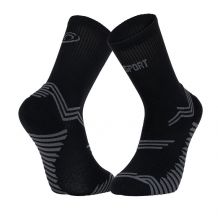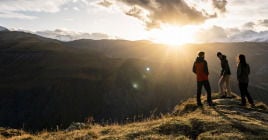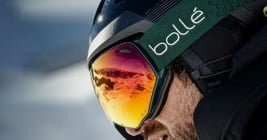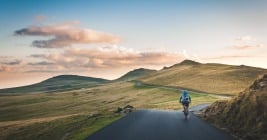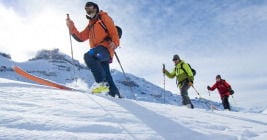How to prevent blisters when hiking
What causes a blister?
- Wearing shoes that don't fit properly.
- The presence of stones or pine thorns inside your shoes.
- Soil or sand seeping into your socks or shoes.
- Seams or creases in your socks.
- Wet shoes due to rain, stream crossings or snow-covered fields.
- Excessive foot perspiration.
How to prevent blisters in your hiking boots
However, there are positive prospects... if you follow the right advice and use tried-and-tested methods. The most crucial thing is to wear shoes that are perfectly suited to your feet from the outset. If you feel even the slightest chafing when you try them on, it's highly advisable to switch to another model.
Choosing the right shoe
Managing moisture to reduce blisters
.png)
How to avoid blisters by taking good care of your feet
- Keep your nails short: This task should be performed every time you set out on a hike. If your nails are too long or ingrown, this can quickly lead to pain and blisters.
- Use blister dressings: If you know that certain areas are prone to blisters, it's a good idea to apply preventive dressings before they appear.
- Opt for adhesive tape: To protect sensitive areas, you can apply medical adhesive tape to cover the affected areas. It's important not to create creases when applying the tape.
- Use anti-blister balms: These products can also reduce the risk of blisters forming. They form a protective layer that prevents friction.
How a good pair of socks can help prevent blisters
High-quality, customized socks make a huge difference. Contemporary functional socks are designed for durability and promote excellent moisture wicking through their fibers. Some are even made with merino wool to prevent unwanted odors and keep your feet warm, even when wet. It's important toavoid cotton socks, as they trap moisture close to your skin, which can be damaging.
First aid: how to treat a blister
- Clean the area thoroughly.
- Use a sterilized needle to pierce the blister (you can burn the tip with a lighter for 1-2 minutes).
- Once the liquid has drained away, dry the area and apply a dressing.
.jpg) |
Noé NIVAULT, Buyer at AlpinStore Practical: hiking, cycling, running, crossfit A blister is an obstacle that every sports enthusiast has had to face! The important thing to remember is that prevention is more important than treatment, because a well-targeted blister and properly applied preventive measures avoid treatment and thus pain. Always have a way of counteracting this recurring problem at the back of your mind! |

.png)










